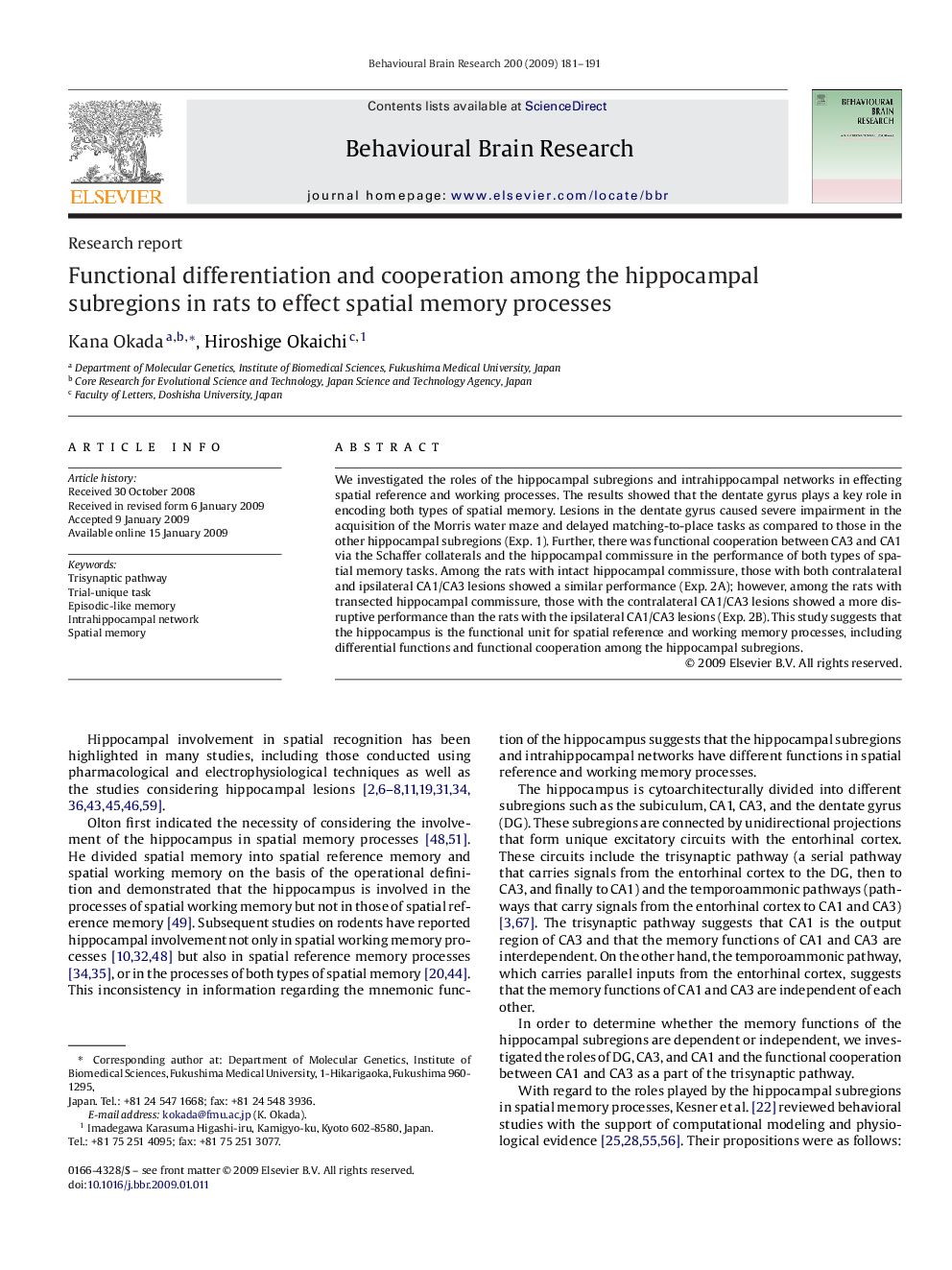| Article ID | Journal | Published Year | Pages | File Type |
|---|---|---|---|---|
| 4314800 | Behavioural Brain Research | 2009 | 11 Pages |
We investigated the roles of the hippocampal subregions and intrahippocampal networks in effecting spatial reference and working processes. The results showed that the dentate gyrus plays a key role in encoding both types of spatial memory. Lesions in the dentate gyrus caused severe impairment in the acquisition of the Morris water maze and delayed matching-to-place tasks as compared to those in the other hippocampal subregions (Exp. 1). Further, there was functional cooperation between CA3 and CA1 via the Schaffer collaterals and the hippocampal commissure in the performance of both types of spatial memory tasks. Among the rats with intact hippocampal commissure, those with both contralateral and ipsilateral CA1/CA3 lesions showed a similar performance (Exp. 2A); however, among the rats with transected hippocampal commissure, those with the contralateral CA1/CA3 lesions showed a more disruptive performance than the rats with the ipsilateral CA1/CA3 lesions (Exp. 2B). This study suggests that the hippocampus is the functional unit for spatial reference and working memory processes, including differential functions and functional cooperation among the hippocampal subregions.
